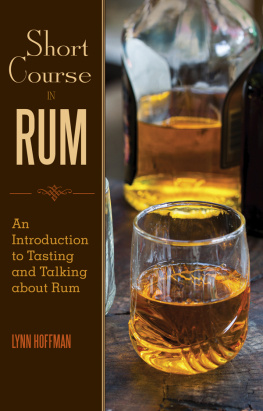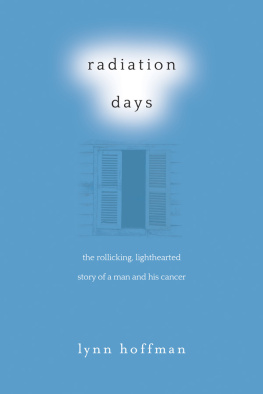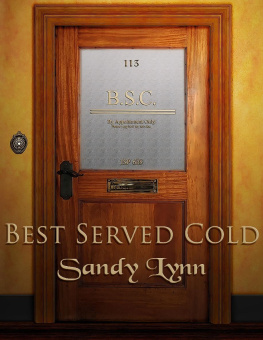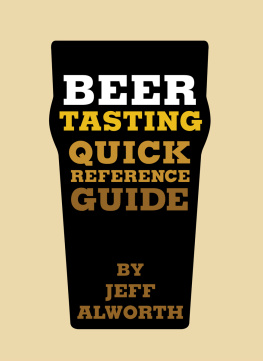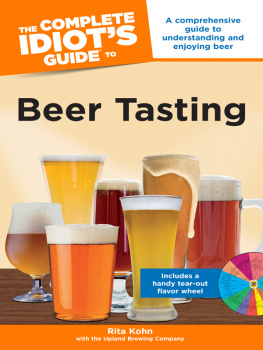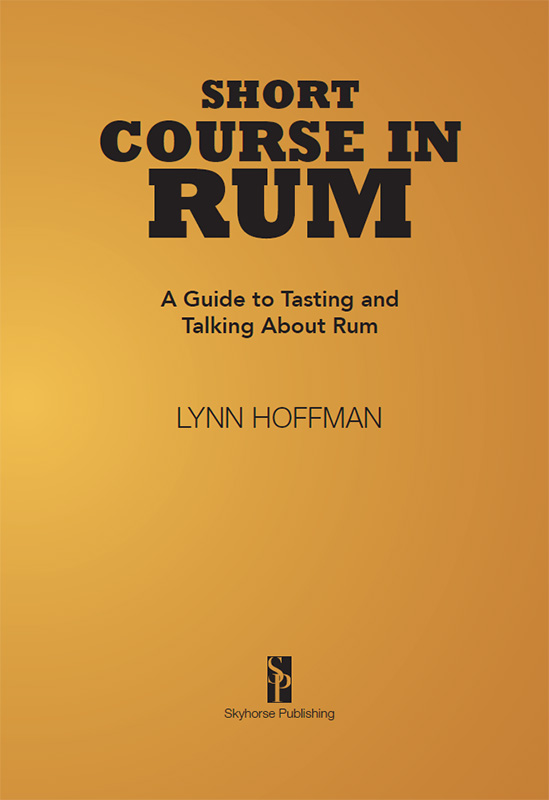Copyright 2015 by Lynn Hoffman
All rights reserved. No part of this book may be reproduced in any manner without the express written consent of the publisher, except in the case of brief excerpts in critical reviews or articles. All inquiries should be addressed to Skyhorse Publishing, 307 West 36th Street, 11th Floor, New York, NY 10018.
Skyhorse Publishing books may be purchased in bulk at special discounts for sales promotion, corporate gifts, fund-raising, or educational purposes. Special editions can also be created to specifications. For details, contact the Special Sales Department, Skyhorse Publishing, 307 West 36th Street, 11th Floor, New York, NY 10018 or .
Skyhorse and Skyhorse Publishing are registered trademarks of Skyhorse Publishing, Inc., a Delaware corporation.
Visit our website at www.skyhorsepublishing.com.
10 9 8 7 6 5 4 3 2 1
Library of Congress Cataloging-in-Publication Data is available on file.
Cover design by Brian Peterson
Photo of light molasses on page 195 by Wikipedia user Londonista
Print ISBN: 978-1-62914-727-7
Ebook ISBN: 978-1-63220-125-6
Printed in China
Contents
CHAPTER 1
A PURIST AND A MODERNIST WALK INTO
A BAR

W hen I started working on this book, I was pretty sure what I wanted to do. I wanted to look at noble, fragrant, complex, wood-aged rums: the type of liquor thats served in snifters and consumed slowly, even reverently. I had the suspicionmaybe even the convictionthat rum was a serious, big deal sort of thing, somewhere above single malt scotch and maybe (just) below cognac. The suspicion was fed by tastes of great, budget-priced rums (Mount Gay) and exquisite and exquisitely-expensive ones (Zacapa).
I was infused with missionary zeal. I think I was hoping to find the rum snobs of the world and go off in a corner where we could all talk about esoteric little bottlings and feel quite content with ourselves. I was a purist and I wanted to meet other purists and convert the uninitiated.
My own drinking history (see ) has only lately been touched by purism. I was never a wine snob: I was just as happy with a grapey-ripe fruit bomb as I was with an elegant super-Tuscan. Id love a dYquem one day and then trot off happily with a Banyuls the next.
Beer was different. There was a lot of product out there that didnt taste very good. Some of it was so bad that the only thing it could be compared to was nauseating, sweet cocktail confections made with cheap rum. I was a beer snob almost from my first bottle of Saison Dupont.
Purism is a kind of ingredient-specific thinking. The best X must be the most reverently produced, additive-free example of its kindan original recipe that outdoes others only in its adherence to some antique ideal. The real beef lover will only allow some salt and perhaps a crank of pepper. A true baseball fan despises the designated hitter. A proper rum enthusiast will allow nothing but sugarcane in the bottle and maybe a splash of water in the glass. And so on.

The thing itself: sugarcane.
When I started some serious tasting, what I discovered made me abandon the purist approach. It even led me to question and finally reject the whole notion of purism. What derailed my approach to purism was a sudden appreciation of Modernist cooking. This epiphany happened at a tavern in Philadelphia called Kraftwork, and Ill tell you more about it in minute, but first lets talk about the Purist and the Modernist.
The Purist
You know this guy: he drinks single malt scotch, maybe the occasional cognac. He takes his liquor straight at cellar temperature in a thin-walled glassa tumbler for the scotch, a snifter for the brandy.
He (its usually a man) is horrified at the thought of soda, visibly pained at the notion of a cocktail.
He is a connoisseursomeone proud of his knowledge of the difference between good and bad. Hes also a puristsomeone who revels in, even worships the idea of a pure, uncompromised thing in itself.
He likes the solos at the jazz club, the consomms at the restaurant. He also takes a certain pleasure in the elevation of his purism above your trashy compromise. He almost needs to snort at your Brandy Alexander in order to fully enjoy his VSOP.
Hes an easy object of fun, both because of the supercilious attitude that often accompanies his pronouncements and for the shaky intellectual ground on which they stand. (Was the scotch purer the minute it came out of the still? What about the adulteration of it by aging then diluting?)
But there is something sweet, almost romantic about the puristsome quality that we have to admire and to which many of us aspire. Admiring things in their simplicity, he turns our attention to the beauty in less, encourages a restrained horror of more. There is an elegance in the drink from the artisans still or the winegrowers vat or the brewers barrel. There is also a suitable humility in our recognition of that elegance by simply leaving it the hell alone as we put it in a glass.
The first part of our ratings is devoted to rums for the purist. These are mostly wood-aged rums that have spent five or more years thinking about themselves before they came to a liquor store near you. They are the products of sugar-cane, wood, time, and skill. The best thing about having a purist category is that these rums give us a chance to see what the cane has in it.

Beef Wellington.
The Modernist
Suppose you could take a bacon, lettuce, and tomato sandwich on a brioche and extract all its flavors and textures and rearrange them. Imagine further that you transformed smoky bacon into a chewy roll and made crispy strips of tomato and layered them with leaves of brioche and doughy, eggy, buttery slabs of lettuce. Does that sound awful? Does it offend the purist in you? Hmm.

Looks odd; tastes great.
The modernist position on food is that no food owns its own properties and that any manipulation we can do in service of foodie fun is not only justified, its holy, worthy, artistic work. The aim is to create a new experience, not to honor old ingredients. So lets compress a slab of cucumber in a vacuum bag and turn it into pemmican. Then, lets sprinkle it with gin and serve it before dinner where the cocktails used to be. Youre not defiling the cucumber; youre helping it realize its potential.
Once you make the sensation the center of culinary effort, you change the whole view of ingredients. Can you imagine a single-malt sorbet? Could you imagine its taste as it melts on a jelly-soft square of sous vide cooked salmon thats waiting for it in a nest of deep fried dill leaves?
One of the loveliest things about rum is that it seems to invite collaboration. It wants to drench pound cake and pull the flavor out of fruit or freeze itself with raisins into ice cream. Rum is pretty fond of other liquids too. It adds dimensions to other alcohols and elevates a host of poor, sad, non-alcoholic drinks. (Cant you hear pineapple juice over in the corner crying for its beloved rum? Imagine: without cocktail rum, a pia colada would just be smushed pineapple and coconut flavor. A rum and Coke would be... well, you get the idea.)

